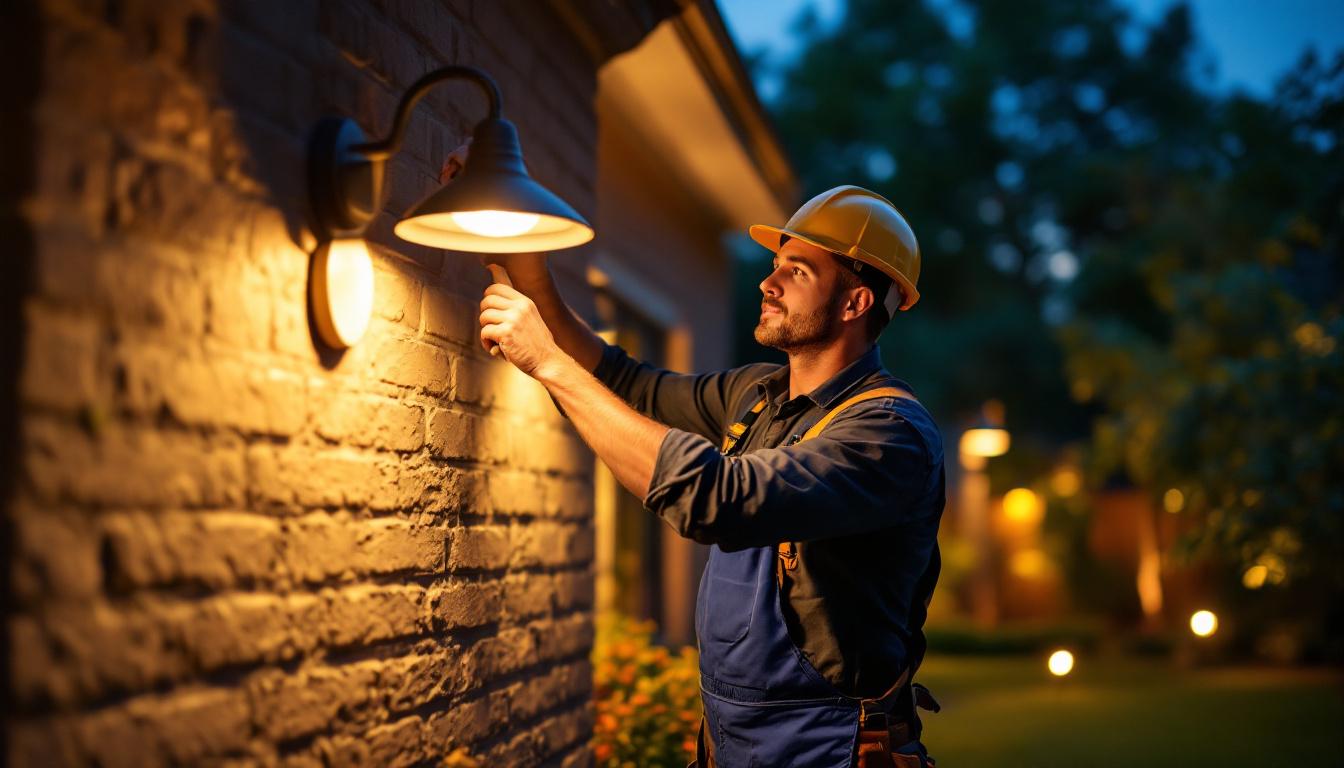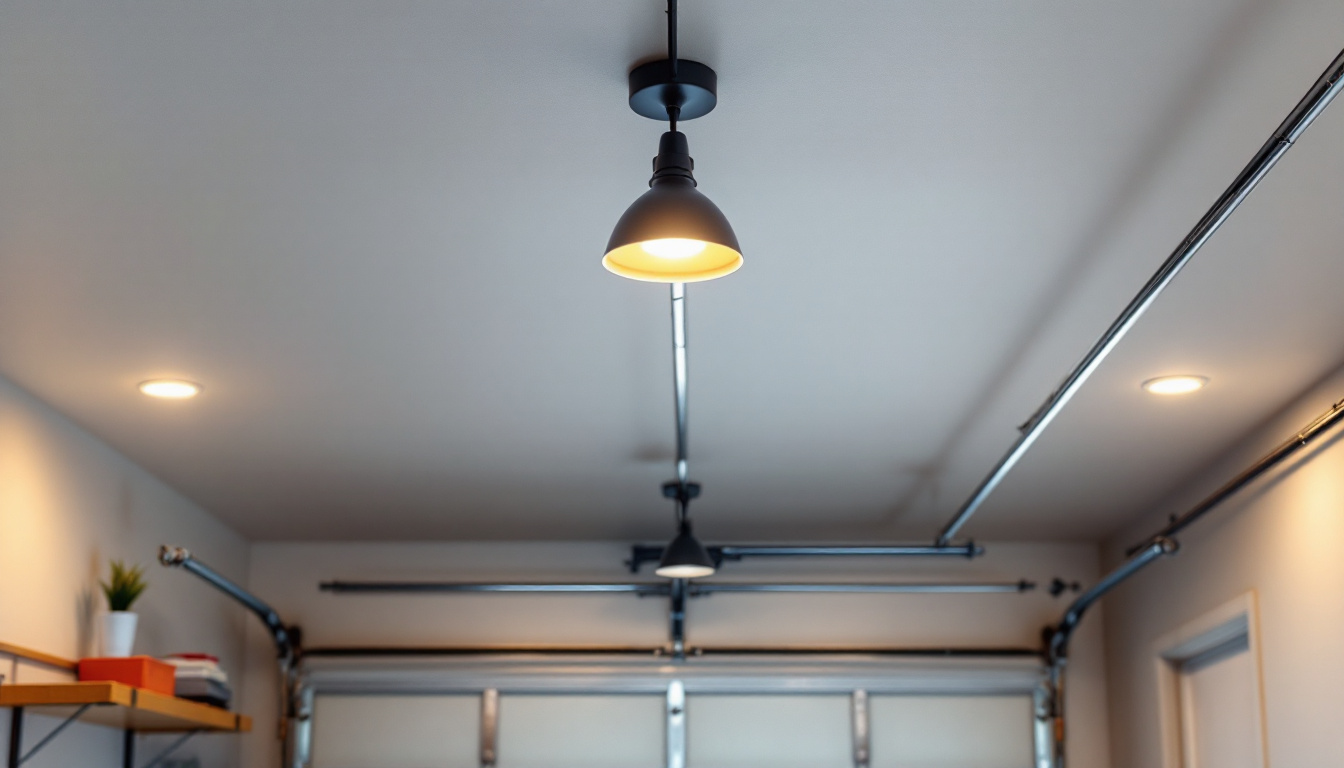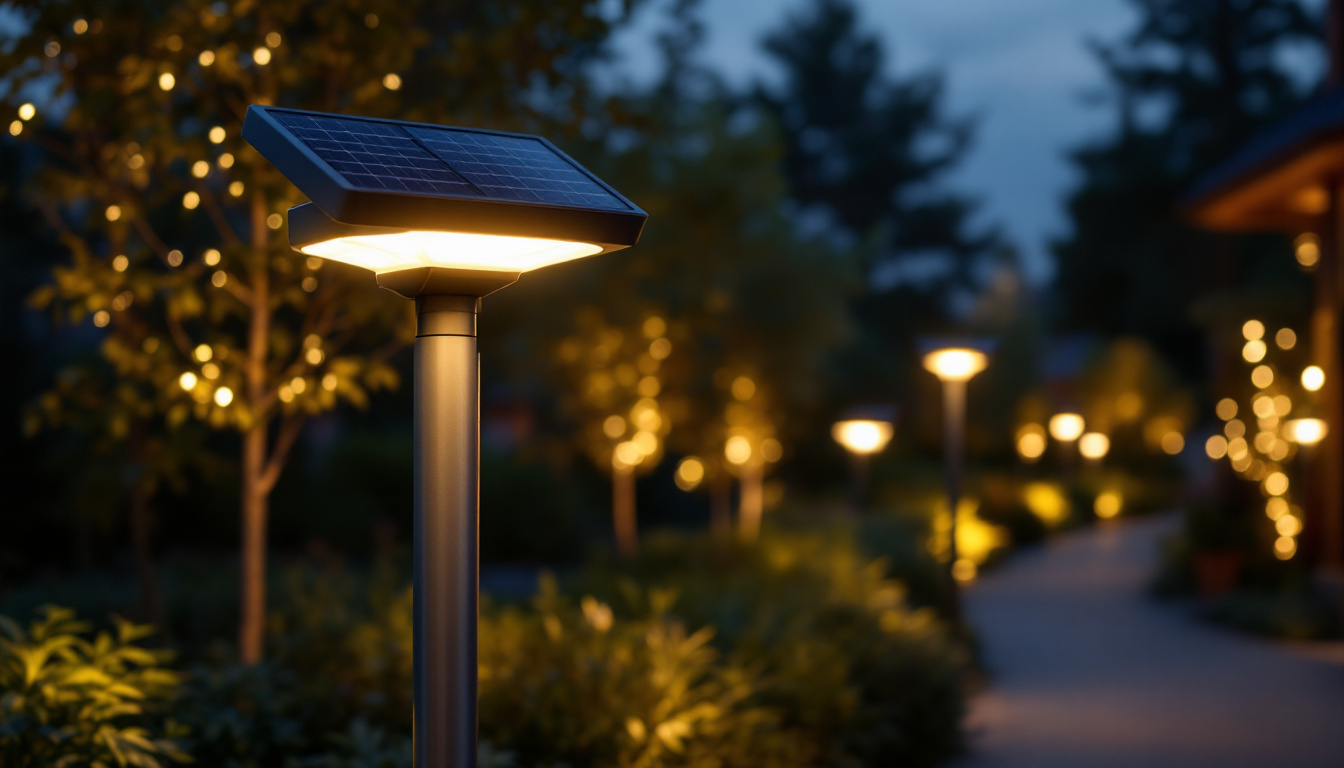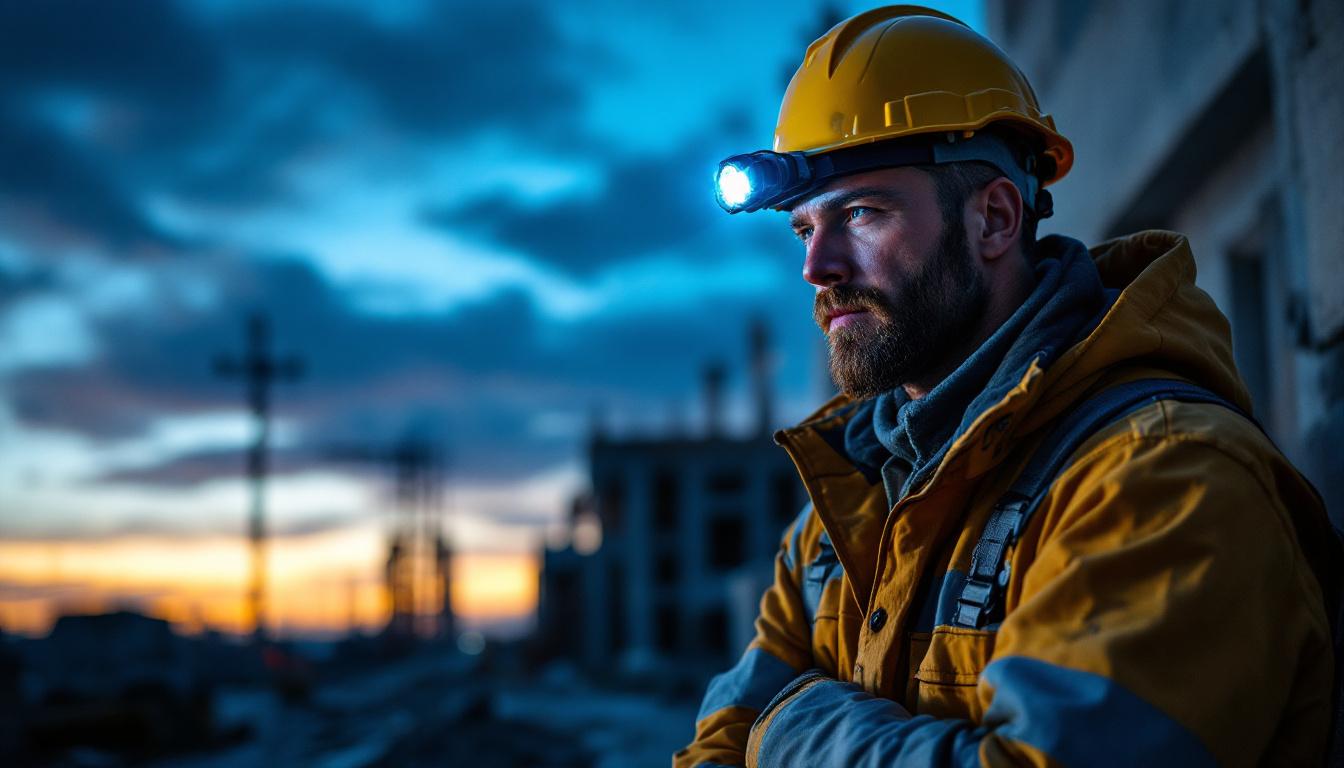
For lighting contractors, the foundation of a successful outdoor lighting project lies in the selection of the right supplies. Outdoor lighting not only enhances aesthetic appeal but also improves safety, security, and functionality. However, the unique challenges of exterior environments demand products that withstand weather fluctuations, moisture, and physical impact.
Choosing inferior or inappropriate supplies can lead to premature failures, increased maintenance costs, and dissatisfied clients. In fact, studies indicate that up to 30% of outdoor lighting failures stem from using components that are not rated for outdoor use or are poorly matched to the application. Therefore, understanding product specifications and environmental requirements is crucial before making any purchase.
Outdoor lighting fixtures and supplies must be constructed from materials that resist corrosion, UV degradation, and temperature extremes. For example, aluminum fixtures with powder-coated finishes are popular due to their balance of durability and affordability. Stainless steel and brass are also excellent choices, especially in coastal areas where salt air accelerates corrosion.
Additionally, components should have appropriate Ingress Protection (IP) ratings to ensure resistance against dust and water intrusion. An IP rating of at least IP65 is recommended for most outdoor applications, indicating protection from water jets and dust ingress. Lighting contractors should verify these ratings and avoid products with ambiguous or missing certifications.
Moreover, the choice of bulbs plays a significant role in the longevity and effectiveness of outdoor lighting. LED technology has revolutionized the industry, offering energy efficiency and a longer lifespan compared to traditional incandescent or halogen bulbs. LEDs are not only more durable but also provide a range of color temperatures, allowing contractors to create the desired ambiance while minimizing energy consumption. Furthermore, with advancements in smart lighting technology, outdoor fixtures can now be integrated with sensors and timers, enhancing both convenience and security while ensuring that energy is used judiciously.
When planning an outdoor lighting project, it’s also essential to consider the layout and design of the lighting scheme. Proper placement of fixtures can dramatically influence the overall effect, highlighting architectural features, landscaping, and pathways while ensuring safety. Techniques such as uplighting, downlighting, and path lighting can be employed to create depth and interest in outdoor spaces. By carefully selecting high-quality supplies and thoughtfully designing the lighting layout, contractors can deliver exceptional results that meet their clients’ expectations and withstand the test of time.
Despite the critical nature of supply selection, many contractors fall into predictable pitfalls that compromise project quality and longevity. Recognizing these mistakes is the first step toward avoiding them.
One frequent error is neglecting to confirm voltage compatibility between power sources, transformers, and fixtures. Outdoor lighting systems often operate on low voltage (12V or 24V) to enhance safety and energy efficiency. Using a fixture designed for line voltage (120V or 240V) on a low-voltage system—or vice versa—can cause equipment damage or pose safety hazards.
Contractors should always verify that transformers, wiring, and fixtures are designed to work together within the same voltage range. Furthermore, understanding voltage drop over long cable runs is essential to maintain consistent brightness and prevent premature fixture failure. This is particularly important in expansive outdoor settings, where the distance between the power source and the fixtures can lead to significant voltage loss. To mitigate this, contractors can calculate the appropriate wire gauge and consider using thicker cables for longer runs, ensuring that the lighting remains effective and reliable throughout the installation.
Energy consumption is a growing concern for clients and contractors alike. LED technology has revolutionized outdoor lighting by offering superior efficiency, longer lifespan, and reduced heat output compared to traditional halogen or incandescent bulbs. However, some contractors still specify outdated or inefficient supplies, missing opportunities to enhance system performance and client satisfaction.
In addition, integrating smart controls such as timers, motion sensors, and dimmers can significantly improve energy savings and functionality. Selecting supplies compatible with these control systems ensures flexibility and future-proofing, which clients increasingly expect. Moreover, the ability to program lighting schedules or adjust brightness based on the time of day not only enhances security but also contributes to a more tailored ambiance for outdoor spaces. As technology continues to evolve, staying informed about the latest advancements in smart lighting can provide contractors with a competitive edge and meet the growing demand for eco-friendly solutions.
Outdoor environments expose wiring and connectors to moisture, temperature fluctuations, and physical stress. Using indoor-rated cables or connectors without proper sealing can lead to corrosion, shorts, and system failure. Contractors must specify outdoor-rated wiring with UV-resistant insulation and connectors designed for wet locations.
Waterproof connectors with secure locking mechanisms prevent accidental disconnections and ingress of moisture. Additionally, proper cable management and protection—such as conduit or burial at recommended depths—are essential to maintain system integrity over time. Furthermore, considering the landscape design during installation can help avoid future issues; for instance, placing cables away from areas prone to heavy foot traffic or landscaping activities can reduce wear and tear. By taking these precautions, contractors can ensure that their outdoor lighting systems remain functional and aesthetically pleasing for years to come.
Even with the best supplies, poor installation practices can undermine the effectiveness and lifespan of outdoor lighting systems. Lighting contractors should adopt comprehensive installation protocols to maximize project success.
Before selecting supplies or beginning installation, conducting a thorough site assessment is imperative. Understanding the terrain, existing structures, vegetation, and client preferences informs the lighting design and supply choices. For example, areas prone to flooding require elevated fixtures or additional waterproofing measures.
Effective lighting design balances aesthetics, functionality, and energy efficiency. Using lighting simulation software or mock-ups can help visualize the final outcome and adjust fixture placement or specifications accordingly. Additionally, considering the time of year and natural light patterns can influence how and when the lighting will be utilized, ensuring that the system meets the specific needs of the environment and enhances the overall ambiance.
Outdoor lighting systems are vulnerable to electrical surges caused by lightning strikes or utility fluctuations. Proper grounding protects both equipment and users from electrical hazards. Contractors should ensure all metal fixtures and components are grounded according to local electrical codes.
Installing surge protection devices at the transformer or control panel level further safeguards the system. These devices absorb transient voltage spikes, reducing the risk of damage and costly repairs. Furthermore, regular inspections of these protective measures can help identify potential issues before they escalate, ensuring the longevity and reliability of the lighting system. Educating clients on the importance of these protections can also foster trust and demonstrate a commitment to safety and quality.
Designing systems with maintenance in mind saves time and expense over the system’s lifetime. Selecting supplies that are easy to access, replace, or adjust simplifies routine tasks such as bulb replacement or cleaning. Modular fixtures and standardized components also facilitate efficient servicing.
Incorporating features such as tool-less entry for fixtures or strategically placed access points can significantly enhance maintenance efficiency. Additionally, creating a maintenance schedule and educating clients on the importance of regular upkeep can prolong the life of the system and ensure optimal performance. By emphasizing the role of maintenance in the overall design, contractors can help clients appreciate the value of their investment and the importance of preserving their outdoor lighting systems for years to come.
Partnering with reputable suppliers and manufacturers is a strategic decision that influences project quality and contractor reputation. Reliable suppliers provide transparent product specifications, warranties, and technical support, which are invaluable during project planning and execution. A strong partnership with suppliers can also lead to better collaboration on future projects, as established relationships often yield preferential treatment in terms of pricing, availability, and access to new products or technologies.
Contractors should assess supplier track records, industry certifications, and customer reviews. Suppliers who specialize in outdoor lighting and demonstrate compliance with industry standards such as UL, ETL, or CE certifications typically offer higher-quality products. Additionally, it is beneficial to investigate the supplier’s history in the market—how long they have been in business, their reputation among peers, and any awards or recognitions they may have received. A supplier with a long-standing presence often indicates stability and reliability, which can be crucial during the lifecycle of a project.
Furthermore, suppliers that provide training resources, installation guides, and responsive customer service contribute to smoother project workflows and problem resolution. Access to comprehensive technical support can significantly reduce downtime and ensure that any issues are addressed promptly, allowing contractors to maintain their schedules and meet client expectations. Engaging with suppliers who offer workshops or online training sessions can also empower contractors and their teams with the knowledge needed to maximize the effectiveness of the products being used.
While budget constraints are common, opting for the cheapest supplies often results in higher long-term costs due to failures and replacements. Investing in quality products with proven durability and performance reduces warranty claims and enhances client satisfaction. Moreover, high-quality materials can improve the overall aesthetic and functionality of a project, which can lead to repeat business and referrals from satisfied clients. It’s essential for contractors to communicate the value of investing in quality to their clients, helping them understand that the initial cost may be offset by the longevity and reliability of the products.
Contractors can negotiate volume discounts or establish preferred supplier agreements to optimize costs without compromising quality. Building a strong rapport with suppliers can also lead to exclusive deals or early access to new products, which can give contractors a competitive edge in the market. Additionally, exploring alternative financing options or bulk purchasing strategies can further alleviate budget concerns while ensuring that quality remains a top priority. By fostering these relationships and being proactive in their purchasing strategies, contractors can achieve a balance that supports both their financial goals and their commitment to delivering exceptional work.
Successful outdoor lighting projects hinge on meticulous selection of supplies, informed by environmental conditions, electrical requirements, and client expectations. Avoiding common mistakes such as voltage mismatches, ignoring energy efficiency, and using improper wiring safeguards system longevity and safety.
Comprehensive site assessments, proper installation techniques, and collaboration with trusted suppliers further enhance outcomes. By prioritizing quality and planning, lighting contractors not only deliver exceptional results but also build lasting client relationships and a strong professional reputation.
Ready to elevate your outdoor lighting projects with the highest quality supplies at unbeatable prices? Look no further than LumenWholesale. Our spec-grade lighting products are designed to meet the rigorous demands of any outdoor environment, ensuring durability and performance. By choosing us, you’re opting for a partner that understands the value of cutting out the middleman, providing you with superior products at wholesale prices. Plus, with free shipping on bulk orders, you can stock up on premium lighting without worrying about hidden fees or compromises. Make the smart choice for your business and experience the best value in wholesale lighting today.

Discover how innovative garage ceiling lights are transforming the way lighting contractors approach projects.

Discover the transformative impact of indirect ceiling light fixtures in modern lighting installations.

Discover the essential guide for lighting contractors on solar pole lights, covering installation tips, design considerations, and the latest innovations.

Discover the top strategies lighting contractors use to select and utilize American-made headlamps.